In 2000, a magnificent film quietly made its entrance into theaters and just as silent of an exit. Shadow of the Vampire stars John Malkovich (Con Air 1997, Color Me Kubrick 2005), Willem Dafoe (Streets of Fire 1984, Antichrist 2009), Udo Kier (Mark of the Devil 1970, Suspiria 1977), Cary Elwes (The Princess Bride 1987, Saw 2004), Catherine McCormack (Braveheart 1995, Spy Game 2001), and Eddie Izzard (Across the Universe 2007, Valkyrie 2008). Written by Stephen Katz (Wind Chill 2007, The Knick TV Series 2014), the film was directed by E. Elias Merhige (Begotten 1990, Suspect 0 2004) and produced by Nicolas Cage (City of Angels 1998, National Treasure 2004).
- Still from Shadow of the Vampire
The film opens with a title card describing the woes of the production company being refused the rights to Bram Stoker’s Dracula story by Mrs. Stoker, so F.W. Murnau (Malkovich) changes the name of the vampire to Count Orlock and the title to Nosferatu, another word for Vampire. The viewer is then watching the first scene being filmed through the camera’s iris in black and white with a circular vignette, as was the style of the time. Greta Schroeder (McCormack) plays the part of Ellen, the fiance of Hutter, as she plays with a cat while Murnau gives her direction. After the scene is over, the vignette disappears and the scene turns to color. With the moving picture still being a new and revolutionary art form, Murnau is determined to create the most realistic film he can, which means shooting on location in Czechoslovakia.
That night, Albin Grau (Kier) is discussing the impending journey to the location. When someone asks who is playing the Vampire. Gustav (Izzard) brags that Murnau told him all about the actor, whose name is Max Schreck (Dafoe), and that he is a character actor that has been at the location for weeks, submerging himself into the role. Also, Schreck will only appear in costume at night. In the morning, the train is being loaded and they are off to the location.
They are staying at a rustic inn where some scenes are going to be shot. Gustav is awoken in the night by strange sounds. He goes across the hall to the cinematographer, Wolf’s (Ronan Vibert: The Pianist 2002, Dracula Untold 2014), room and finds the window open and Wolf cowering in fear. Gustav goes back to his own room, shuts his window and blows out his candle as a car is heard leaving. In some dilapidated, dank cave, someone is carrying a cage containing a ferret. They set the cage down and leave as something approaches from the back with long, yellowed fingernails and takes the cage.
- Still from Shadow of the Vampire
Murnau and crew are at a castle the following night and film the scene where Hutter is introduced to Count Orlock. Everyone is visibly disturbed at the sight of Orlock. After the scene is filmed, someone finds Wolf on the ground and sick inside where Schreck disappeared. When they bring him back to the inn, the Innkeeper takes one look at Wolf, utters “Nosferatu,” crosses herself, and leaves. The following night, someone delivers a bottle of blood to Schreck. Afterwards, there is a dinner scene between Hutter and Orlock, where Hutter cuts his finger with a knife and Orlock attacks as lights go out. When they come back on, Schreck is biting Wolf’s neck. Murnau confronts Schreck stating, “I contracted you in secrecy and at great expense. You will not damage my production!” Later that night, with a sick Wolf in the car, Murnau confronts Schreck yet again, still under the delusion that he is in control of the uncontrollable monster.
With a budget of approximately $8,000,000, Shadow of the Vampire was able to be shot on location in Luxembourg, a rustic and old area steeped in superstition, as it resembled the setting of Nosferatu. It grossed an estimated $8,279,017 at the box office, making it an under the radar hit, but not the blockbuster for which everyone had hoped.
Critically, Shadow of the Vampire was well received. Roger Ebert said, “Director E. Elias Merhige and his writer, Steven Katz, do two things at the same time. They make a Vampire movie of their own, and they tell a backstage story about the measures that a director will take to realize his vision”, and that Dafoe “Embodies the Schreck of Nosferatu so uncannily that when real scenes from the silent classic are slipped into the frame, we don’t notice a difference.”
The acting is what makes Shadow of the Vampire so wonderful. Separately, Willem Dafoe and John Malkovich are each their own force to be reckoned with, but paired together, they are lightning in a bottle. Malkovich’s Murnau is not quite a tyrant, but pretty close, however, history tells that F.W. Murnau was a genius director with a rare sensitivity. Malkovich was almost evil putting his cast and crew into the danger that he did, but such is the price of art. Some of the best parts are when he is interacting with the Vampire one on one. Some of Malkovich’s best lines come during one of these arguments when the Vampire refuses to sail and Murnau says, “Then I will replace you with a double!” and “You will have no closeups. None!” and finally, “I have shots!” The fact that Murnau is berating an immortal, voracious, undead creature and thinking he’s still in control is so deliciously ironic.
Dafoe’s Vampire is nothing short of genius, magic, or whatever you want to call it. He watched Nosferatu multiple times and studied the way Max Schreck’s mannerisms and how he had moved, and when Dafoe put on the costume, which included a corset and extensive makeup, only the Vampire existed. Dafoe embodied both actors that previously played Nosferatu: Max Schreck and Klaus Kinski (Nosferatu the Vampyre 1979, Crawlspace 1986) One of his best scenes is where he is with Albin Grau and Henrik (Aden Gillett: The Borrowers 1997, The Winslow Boy 1999) and he tells them that he read Dracula and that he found it sad; sad because, Dracula had no servants. Albin and Henrik chuckle, but he explains that if Dracula had been a Vampire for 400 years, and not have needed a mortal meal, how would he remember to set a table, buy bread, make a bed? He then snatches a bat out of the air, starts drinking its blood, and explains how he came to be; that it was a woman, who he has since forgotten as all her visages faded over time.
- Still from Shadow of the Vampire
Even though the Vampire is sinister and wants nothing but blood, he is no less a sad character who lived in solitude until Murnau found him. At one point early in the film, while prepping for a scene, Henrik, in order to give the Vampire motivation, asks him, “What do you most desire, but is most unattainable,” to which the Vampire replies, “The light of the sun.” This wonting is evident throughout the film, as in his lair, there is a large drawing on the back wall of a golden sun with many rays shooting out. He also starts playing with a camera and notices that it is footage of the sun and stares directly into the lens so he could feel the sun’s warmth, even if it was simulated. Dafoe did so well, that he was nominated for an Academy Award for Best Supporting Actor.
Shadow of the Vampire is a great, yet wholly under-appreciated film. It took the story of the making of Noserfatu, and turned it into non-fiction. Of course Max Schreck was not really a Vampire, he was a stage and screen actor, but he played the role of Nosferatu so well, that the character coul have been real, and that is the genius of Shadow of the Vampire: they took fantastical elements and intermingled them with historical events, making a thought-provoking “What if” film.
- Lions Gate Films


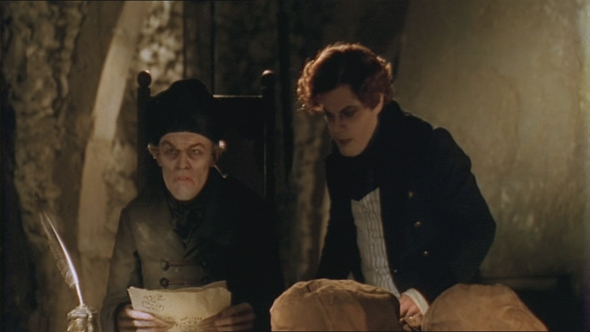
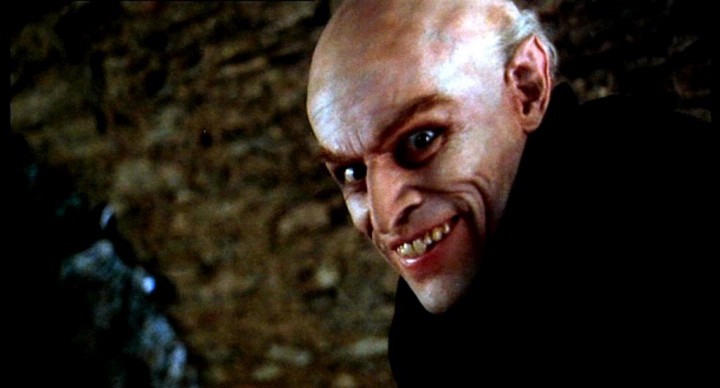
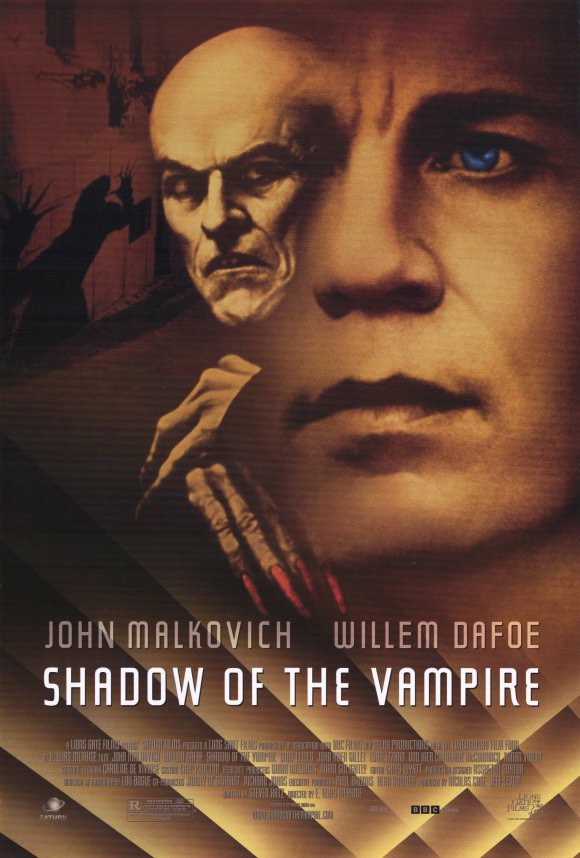
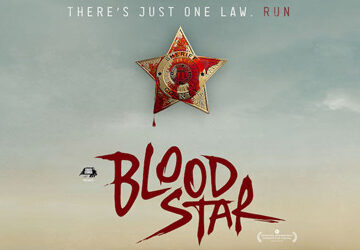
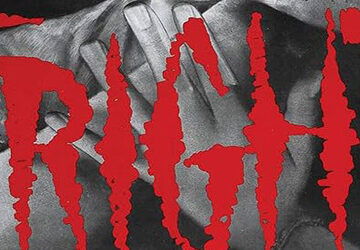


No comment